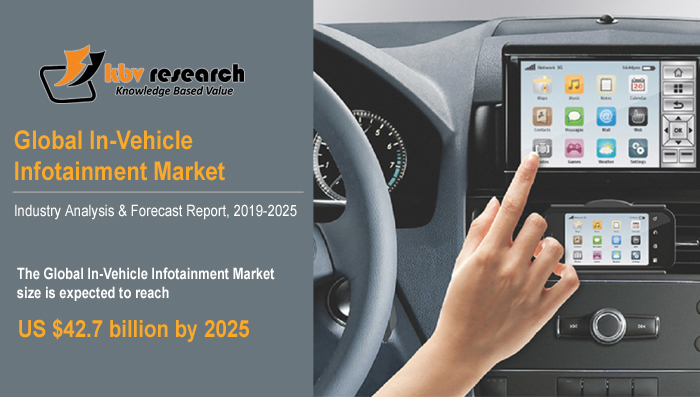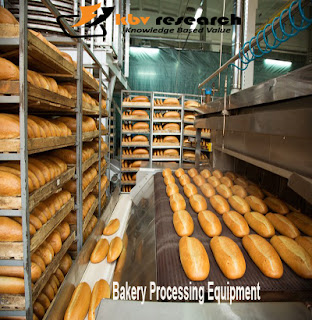In-Vehicle Infotainment As The Next-Generation Automotive Entertainment Technology
The automotive industry as a whole is moving towards the development of innovative technologies to allow better communication solutions, improve vehicle safety and enhance user experience in the automobile. The in-vehicle infotainment system is one of the main technologies which acts as a centerpiece of all modern automotive systems and integrates their functions.
This helps to regulate and monitor functions from a single central unit. Modern infotainment systems in vehicles communicate with and integrate with all smart automotive technologies such as ADAS systems, V2X communication solutions, telematics tools, smartphones, sensors, etc. to have great driving experience. |
| In-Vehicle Infotainment |
All about in-vehicle infotainment
In-Vehicle Infotainment (IVI) or In-Car Entertainment (ICE) systems are a series of hardware, software, and connected services that mainly provide multimedia (audio and video), navigation, and, gradually, more connected services. Infotainment evolved from basic car audio systems consisting of radio and cassette/Compact Disc (CD) players which were operated by a basic dial and button dashboard.Today's highly sophisticated systems are supported by a wide variety of interfaces, such as touchscreens, steering wheel controls and, increasingly, hands-free voice control. The key components of every modern infotainment system are navigation, multimedia, and a human-machine interface (HMI), with cloud-connected applications that now offer additional features as one of these categories' subsets.
Features of an in-vehicle infotainment system
High-Resolution Touch Screen
Touch screens consist primarily of LCD (Liquid Crystal Display) or TFT (Thin Film Transistors). Full-color, active LCD matrix (AMLCD) TFTs are the most suitable display technologies for complex and dynamic graphic displays. The size of the automotive infotainment system varies from 2" to 12" in general, although some HD displays are 20" wide.Smartphone Pairing
With the Bluetooth integration, smartphones can be combined with the vehicle infotainment device. When the smartphone is combined with the device, the user can access phone features via the infotainment system. This feature enables users to handle incoming, outgoing, and conference calls via infotainment. It also allows users to access their contact list on their phone, call logs, identify favorite contacts, and read SMS.Multimedia Support
Modern infotainment systems distribute audio and video content via Bluetooth, HDMI cable, and USB to monitor displays, microphones, and headphones. It is possible to stream audio and video data from smartphones, laptops, etc .. Bluetooth integration allows for advanced functionality such as hands-free communication, viewing of phone logs, etc. MP3,.aac, and FLAC are only a couple of the popular formats for supporting system audio files. For infotainment systems, images with JPEG, PNG and BMO formats and videos with the formats .mp4 and.avi are more appropriate.New services and features of embedded navigation
Leveraging the increasing number of in-vehicle displays
The visual experience of navigation serves as a possible differentiator between built-in navigation and embedded navigation with the move towards larger head unit screens, digital clusters, and panoramic screens inside the vehicles. Bought-in handset devices have no access to the digital cluster, even with projection protocols, due to cybersecurity concerns and the separation of safety-critical and non-safety-critical components. Consequently, OEMs realize that the extra digital cluster could function as a differentiating factor between their embedded navigation and bought-in third-party navigation.Locational-based advertising and e-commerce
Future embedded navigation systems are likely to integrate location-based ads that will help drive new e-commerce opportunities for OEMs, retailers and browser providers (through possible revenue sharing models). Information about the position can be collected and analyzed using AI to create user expectations and habits. This, in effect, will drive user-tailored and specific opportunities for e-commerce and locational-based advertising. To provide this experience in a non-distracting, non-intrusive way, any e-commerce/advertising solution must be suitably incorporated into the mapping framework and HMI voice control.HD maps
HD maps currently serve as the key enabler for advanced ADAS features, such as advanced lane-keeping systems, and steer-by-wire systems, such as advanced cruise control/traffic jam assist systems. The growing use of HD maps will be made for the Society of Automotive Engineers (SAE) Level 2 ADAS as well as higher levels of autonomy, leading to a higher number of vehicles using data, which will also help to increase the number of vehicles available for data collection in turn.The correlation between the HD map data used for ADAS and infotainment remained largely untapped at this time. The same HD map data may also be used to provide infotainment functions such as lane level guidance, lane level traffic characteristics, dynamic traffic flow data, speed profile data among other features.
What’s trending in the in-vehicle infotainment industry?
Enhanced security
Enhanced risk comes with improved connectivity. The age of advanced vehicular communication poses severe security risks, whether to disrupt driving capacity or steal personal information. That's why we're going to see the increasing proliferation and growing complexity of automobile cyber-security solutions to keep drivers and their automobiles secure.Internet of Things (IoT) and Artificial Intelligence (AI)
The Internet of Things (IoT) and Artificial Intelligence (AI) are the evolving phenomena in the automotive industry as a whole. They're resolutely intent on revolutionizing it. The smartphone turns into a bigger version of a vehicle. IoT and AI commence an ongoing phase of change through the vehicle and device connectivity, as well as autonomous driving and shared mobility. New cars, including Siri or Alexa, provide you with an in-vehicle personal assistant. They can also connect to other vehicles and to accept software or app updates from the manufacturer.Change Control
Using the same example with the iPhone, when a new version of the iOS is released, users of older devices realize that certain features are unlikely to be compatible with their model, which creates system errors. That is because older ones are either forgotten or simply unable to be helped when developing new products. Today, the vehicles are also machine powered. Over-the-air fixes for the non-safety security features are now being introduced. When vehicles are more linked to this function of the OTA update becomes a standard.What the future holds for automotive infotainment system?
The in-vehicle infotainment market is being influenced by the technological trends described above as well as by the entry of new aggressive market entrants. In the near future, vehicle infotainment and the interactive cockpit system will develop exponentially, with new technologies such as gesture control, driver tracking, passenger detection (cabin tracking using camera/radar).The next major in-vehicle infotainment systems trend would be gesture control, whereby users will be able to enter different commands without necessarily taking their eyes off the road to manipulate the buttons or displays. Within those radar systems, various techniques will promote being pegged to be the most favored solution for detecting gestures.
Free Valuable Insights: Global In-Vehicle Infotainment Market to reach a market size of USD 42.7 billion by 2025
Vehicle safety regulatory bodies will require driver monitoring systems. These systems help in assessing driver in-attention not only by recognizing the driver but also by tracking the facial features. Cabin tracking or identification of passengers helps identify any left-out passengers (kids or pets) in the rear seat. This application is made using mmWave Radar technology that can clearly distinguish between living and non-living things inside the cabin.


Comments
Post a Comment